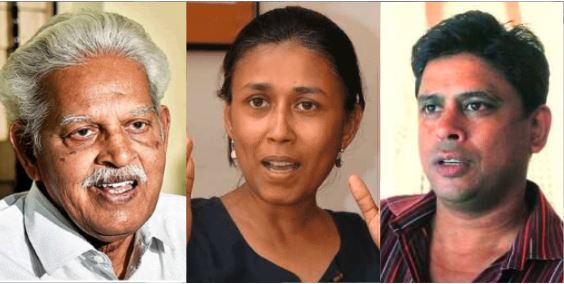Since the death of 22 jawans in the Naxal attack in Chhattisgarh, there has been much debate around the menace of Naxalism. However, the real issue of ‘Urban Naxals’ – the people who provide intellectual and financial support to the poor and brainwash people who fight in jungles and remote areas – is getting very little attention. Nandini Sundar, who is among the most recognisable faces supporting Naxalism, is still a professor of sociology at the Delhi School of Economics. Moreover, other Urban Naxals such as Sudha Bharadwaj, Arun Ferriera, Vernon Gonsalves, Varavara Rao, and Gautam Navalakha still get a voice in the media and intellectual establishments and continue propagating their anti-national ideas. Even people like G N Saibaba had a Professorship at Delhi University only two days ago.
People like Varavara Rao, Arun Ferreira and others, often referred to as the Urban Naxals had a long history of inciting violence but they still roam free around the country pursuing their anti-national agenda for a few years. Varavara Rao was arrested in 1973 under the Maintenance of Internal Security Act. He was thrown behind the bars many times between 1975 and 1986, in different cases including the 1986 Ramnagar conspiracy case where he was acquitted after 17 years in 2003. He was again thrown behind the bars in 2005 under the Andhra Pradesh Public Security Act.
Arun Ferreira has also been arrested in the past as well. He has spent five years in jail. He is a Mumbai-based activist. He was claimed to be the leader of the propaganda and communications wing of the banned Communist Party of India (Maoist) in 2007. Similarly, most of the other Urban Naxals have a history of spreading activism for decades, but they were not behind the bars until a few years ago. Yet, a large number of Urban Naxals like Nandini Sundar still roam free.
If the Modi government wants to fight against Naxalism, it needs to focus on Naxals as well as Urban Naxals. Naxals have their own arms factories, a research and development wing, a propaganda wing, and a recruitment branch. Naxalism is far more organised than one could imagine, and there is greater involvement from urban centres though it is almost invisible. They have a dedicated network that functions as the propaganda wing concentrated in the urban areas. This wing includes lawyers, former judges, activists, and students.
These urban comrades not only act as propaganda machinery evoking sympathy for Naxals as ‘victims’ and portraying the establishment as oppressors, but also aid the movement of men, funds, and ammunition in Naxal-controlled areas. In 2008, Chhattisgarh police had discovered that a travel agency had been helping the Naxals in moving their arms and men.
Thus, it is important to understand how “Urban Naxals” have facilitated the rise of the toxic ideology in the far-flung areas of India. In fact, even the architects of the Naxalbari revolt, Charu Mazumdar and Kanu Sanyal came from an affluent and urban background. It was this Naxalbari revolt that ultimately led to the spread of Naxalism across several states.
Union Home Minister Amit Shah needs to go with a two-pronged strategy in the fight against Naxalism in India with the first being the aggressive approach towards Naxals and the other being a renewed focus on Urban Naxals.
